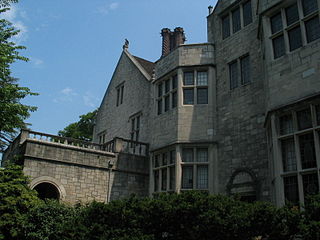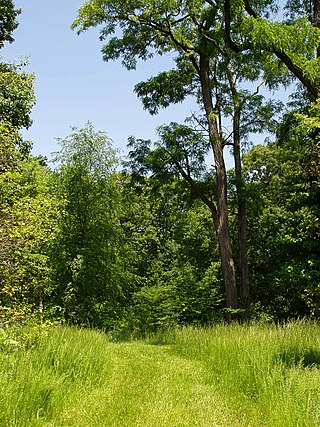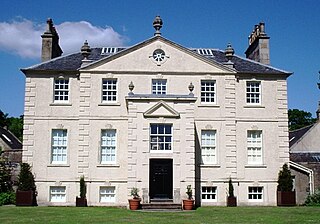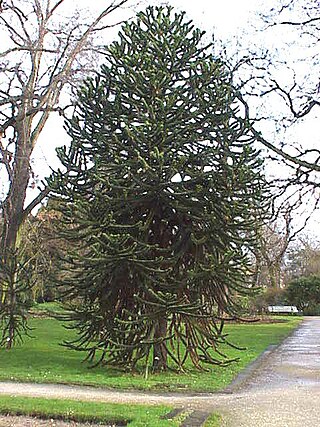
A shrubbery, shrub border or shrub garden is a part of a garden where shrubs, mostly flowering species, are thickly planted. The original shrubberies were mostly sections of large gardens, with one or more paths winding through it, a less-remembered aspect of the English landscape garden with very few original 18th-century examples surviving. As the fashion spread to smaller gardens, linear shrub borders covered up walls and fences, and were typically underplanted with smaller herbaceous flowering plants. By the late 20th century, shrubs, trees and smaller plants tend to be mixed together in the most visible parts of the garden, hopefully blending successfully. At the same time, shrubs, especially very large ones, have become part of the woodland garden, mixed in with trees, both native species and imported ornamental varieties.

An arboretum is a botanical collection composed exclusively of trees of a variety of species. Originally mostly created as a section in a larger garden or park for specimens of mostly non-local species, many modern arboreta are in botanical gardens as living collections of woody plants and is intended at least in part for scientific study.

Biddulph is a town in Staffordshire, England, 8.5 miles (14 km) north of Stoke-on-Trent and 4.5 miles (7 km) south-east of Congleton, Cheshire.

The Birmingham Botanical Gardens are a 15-acre (6-hectare) botanical garden situated in Edgbaston, Birmingham, England. The gardens are located 1+1⁄2 miles (2.4 km) south-west of Birmingham city centre at grid reference SP049854. Designed in 1829, the gardens are Grade II* listed in Historic Englands's Register of Parks and Gardens, and retain many original features and layout, which was designed by the landscape gardener and horticulturalist John Claudius Loudon. The site is notable for its range of glasshouses and gardens, which display a wide variety of plants and birds. Birmingham Botanical Gardens is managed by Birmingham Botanical and Horticultural Society, a registered charity. The gardens are open daily to the public with paid admission.

Robert Bateman (1842–1922) was a British painter, architect and horticultural designer.

James Bateman was a British landowner and accomplished horticulturist. He developed Biddulph Grange after moving there around 1840, from nearby Knypersley Hall in Staffordshire, England. He created the famous gardens at Biddulph with the aid of his wife Maria and his friend and painter of seascapes Edward William Cooke. From 1865–70 he was the founding president of the North Staffordshire Field Club, the large local club which to this day researches local natural history and folklore.

Bodnant Garden is a National Trust property near Tal-y-Cafn, Conwy, Wales, overlooking the Conwy Valley towards the Carneddau mountains.

Planting Fields Arboretum State Historic Park, which includes the Coe Hall Historic House Museum, is an arboretum and state park covering over 400 acres (160 ha) located in the village of Upper Brookville in the town of Oyster Bay, New York.

Rutgers Gardens is the official botanical garden of Rutgers University, located on the outskirts of Rutgers School of Environmental and Biological Sciences, at 112 Ryders Lane, North Brunswick, New Jersey. The grounds include 60 acres of designed beds, specialty gardens, tree and shrub collections, lawns, and walking paths, and the adjoining 70-acre Frank G. Helyar Woods. The gardens are open year-round, without fee, and feature horticultural collections arranged in garden settings. In 2017 it was granted landmark status by the American Society for Horticultural Science.

The Sir Harold Hillier Gardens is an arboretum comprising 72 hectares accommodating over 42,000 trees and shrubs in about 12,000 taxa, notably a collection of oaks, camellia, magnolia and rhododendron.

The Norfolk Botanical Garden is a botanical garden with arboretum located at 6700 Azalea Garden Road, Norfolk, Virginia.

Greenbank Garden is a 2.5-acre (10,000 m2) 18th century walled garden in Carolside, Clarkston, East Renfrewshire, Scotland, owned and operated by the National Trust for Scotland and open to the public. It is situated about six miles (10 km) from the centre of Glasgow. The garden, which is included on the Inventory of Gardens and Designed Landscapes in Scotland, surrounds Greenbank House, a Category A listed building. The house has sixteen rooms, and also barns and stables.

Edward William Cooke was an English landscape and marine painter, and gardener.

William Lobb was a British plant collector, employed by Veitch Nurseries of Exeter, who was responsible for introducing to commercial growers Britain Araucaria araucana from Chile and the massive Sequoiadendron giganteum (Wellingtonia) from North America.

A stumpery is a garden feature similar to a rockery but made from parts of dead trees. This can take the form of whole stumps, logs, pieces of bark or even worked timber such as railway sleepers or floorboards. The pieces are arranged artistically and plants, typically ferns, mosses and lichens are encouraged to grow around or on them. They provide a feature for the garden and a habitat for several types of wildlife. The first stumpery was built in 1856 at Biddulph Grange and they remained popular in Victorian Britain.

Altamont House is a historic building best known for its ornamental gardens in County Carlow. The Robinsonian-style gardens are often referred to as "the jewel in Ireland's gardening crown".

Biddulph Grange Country Park is a country park in Biddulph, UK. It was originally part of Biddulph Grange.
Biddulph is a civil parish in the district of Staffordshire Moorlands, Staffordshire, England. It contains 61 listed buildings that are recorded in the National Heritage List for England. Of these, six are at Grade II*, the middle of the three grades, and the others are at Grade II, the lowest grade. The parish contains the town of Biddulph and the surrounding area. In the parish is Biddulph Grange, a country house, which is listed together with a number of decorative features in its garden and grounds. The other listed buildings include houses and associated features, cottages, farm houses and farm buildings, churches and items in churchyards, a wayside cross, three milestones, a drinking trough, a tower, the engine house of a former coal mine, a school, almshouses, bridges, and two war memorials.

A woodland garden is a garden or section of a garden that includes large trees and is laid out so as to appear as more or less natural woodland, though it is often actually an artificial creation. Typically it includes plantings of flowering shrubs and other garden plants, especially near the paths through it.





















